A few months ago, we visited the Towner cinema for a documentary film about Gustav Klimt. It was fascinating and reawakened my long held desire to visit Vienna.
When my son caused us to cancel our longed for trip to Oregon due to his military obligations, we decided to console ourselves with a special holiday. And where better to go than Austria?
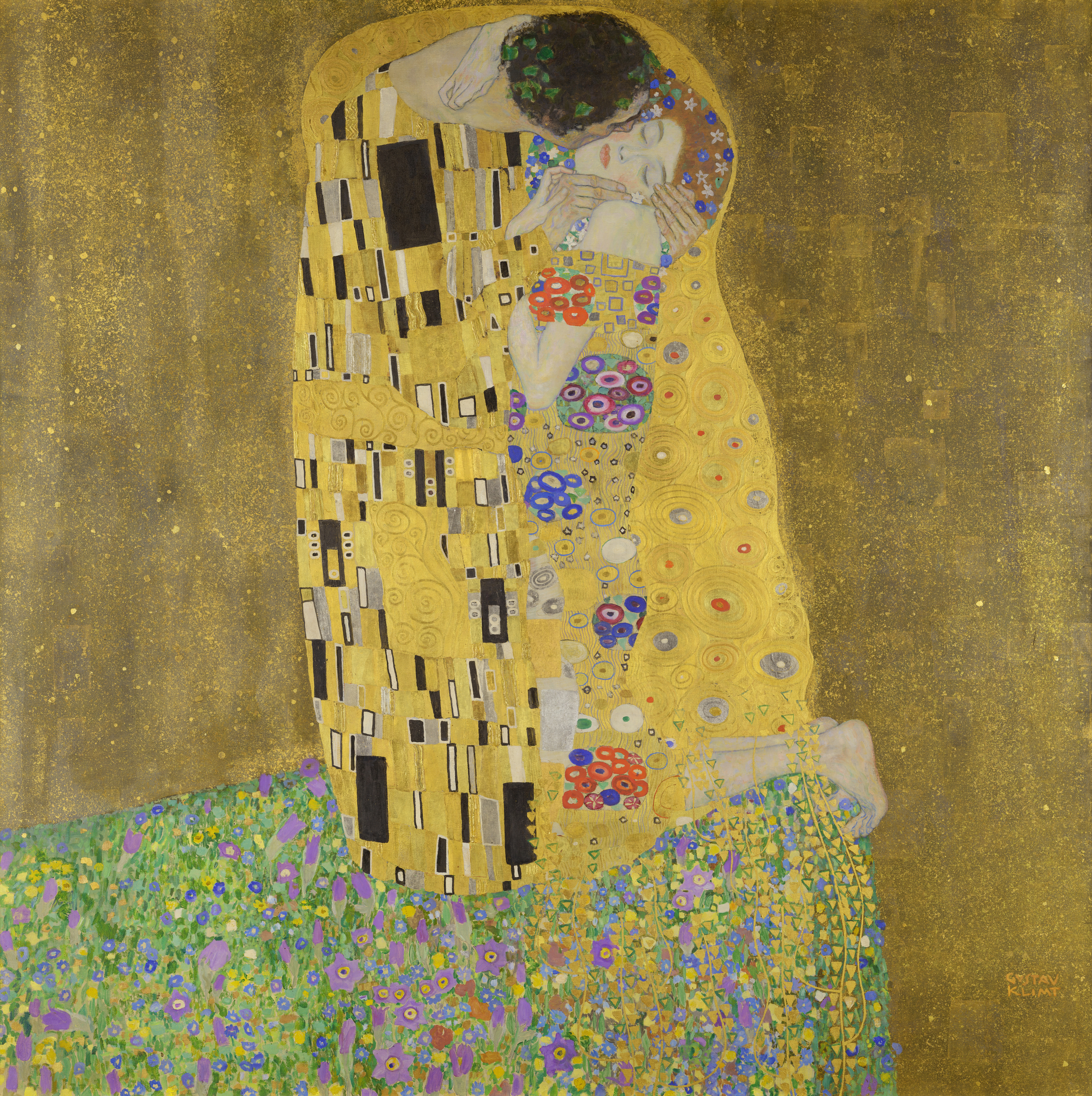
Location, location, location
With the money already saved, my husband decided to splurge on lovely accommodation in a central location. It was more than worth the extra expense. Our hotel was situated at the heart of the old town next to St Stephensplaz – the site of Vienna’s grand Gothic cathedral.
With little or no travelling required, we were free to explore at our leisure or to simply venture out to the square and watch the world pass by.
Around the corner was St Stephen’s cathedral – a Gothic fantasy of gilt, tile and ornamental stonework.



We took numerous tours of the exterior finding glorious details each time. The interior (above top) was simply too much to take in no matter how often you visited.
The square, like much of Vienna’s centre, was pedestrianised and filled with cafes spilling tables onto the pavements. Full, but not overly so, the atmosphere was buzzing with life. As an extremely safe and law abiding country, the crowds posed no cause for concern, and the buildings, both old and new were their own works of art.
Art for all tastes
But we went to Vienna to enjoy its incredible and extensive art collections. We lost count of the number of galleries and museums on offer and decided to focus on the ones that we considered unmissable.
Like most tourists, we wanted to see The Kiss in situ, since no replica in print or digital form can do it justice. It is located at The Belvedere – the old emperor’s summer palace. The palace itself is awe inspiring – filled, a little gaudily for my taste, with painted ceilings and endless embellishments.
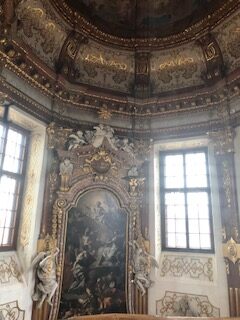
The Upper Belvedere (there is also a lower Belvedere and gardens) is where the fin de siecle and early 20th century paintings reside. The collection includes Klimt, Monet and Van Gogh plus many other superb, lesser know artists. We feasted our eyes on masters until our senses could take no more.




Venturing back out into the rain, we had a long walk home (for Jeff did,as I was in the wheelchair).
The spectacular parks and buildings kept our minds from our rain drenched clothing. We were also in search of the Secessionist Building – a stunning art nouveau museum that houses Klimt’s Beethoven Frieze. We almost missed it. This gallery is now marooned next to a busy ring road. Were it not for the exquisite dome composed of golden leaves, we would have passed it by.



The Secessionists were an open movement who welcomed all those who were at the forefront of modern art. An unexpected connection was between them and the Arts and Crafts Movement in England. Each believed that art should serve function as well as form. Ideas and styles intertwine the two.
The big MAC
This was most evident at the MAC museum, which celebrates the applied arts. On the second floor is the most magnificent frieze by Margaret MacDonald Mackintosh (wife of Charles Rennie) next to a study for an enormous one by Klimt. Side by side, you can see the Art Nouveau swirls and spirals and the stunning blocks of colour that each share but have made their own. I could also see Aubrey Beardsley in Klimt’s work and the Pre-Raphaelite influence in Mackintosh’s faces. As in all things, the cross-fertilisation of creative seeds produces the most sumptuous fruits.
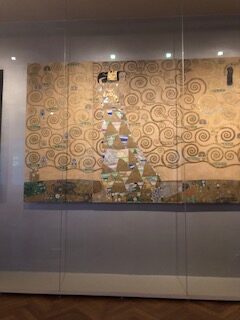
From the sublime to …
the ridiculous would be unkind. But how should one categorise the work of the exuberant, rule bending artist that is Hundertwasser?
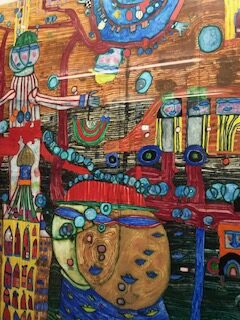
Like Mackintosh and Klimt, this eccentric creative was concerned with art in all its forms, though he is most famous for his architecture. An early environmentalist, his buildings celebrate the inclusion of the natural world in tandem with the manmade. His famous social housing project, Hundertwasserhaus, was designed to show that social housing can be both beautiful and organic. The roofs were covered in soil and trees were planted. Plants protrude from balconies and the walls painted in rainbow hues. It is now a major tourist attraction.
We chose to visit the Kunst Haus (art house) that contained his collection of
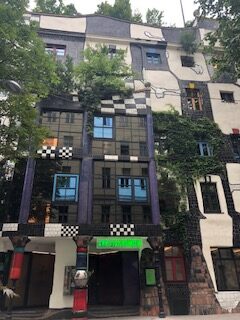
art and architectural designs. The building itself is a manifestation of both his credo and creativity. Considering straight lines an anathema, he ensured all the walls curved subtly. So too the floors – which required some attention.
My favourite parts were the disabled loo (yes, seriously cool) and the outside cafe where I could have happily whiled away many hours.
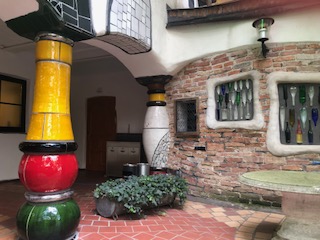
Vienna has always been known for its slightly racy scene and bohemian artists. Yet, it still maintains standards that make visiting a joy: clean streets, great infrastructure and tolerance.
We were there for a week and crammed each day (between naps) with excursions. Still, we only managed the most cursory of investigations. The churches alone with their Baroque ornate style could fill weeks and so too the hundred or so museums. The parks and architecture presented their own delights and simply perusing the streets soon led to culture fatigue.
A week later, my brain is still trying to process it all. Challenged, inspired and exhilarated, I doubt I will need an art date for months to come.

How lovely 🥰
Thank you! It was rather delightful! xx